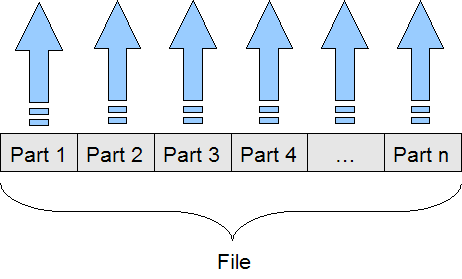Hi, if you use Maven you can add following dependency in your.pom file com.amazonaws aws-java-sdk 1.9.2 If you don’t use Maven you need to add all of this (you can copy the JAR-s from AWS SDK) * aspectjrt.jar * aspectjweaver.jar * aws-java-sdk-1.9.0.jar * commons-codec-1.3.jar * commons-logging-1.1.1.jar * freemarker-2.3.18.jar * httpclient-4.2.3.jar * httpcore-4.2.jar * jackson-annotations-2.1.1.jar * jackson-core-2.1.1.jar * jackson-databind-2.1.1.jar * joda-time-2.2.jar * mail-1.4.3.jar * spring-beans-3.0.7.jar * spring-context-3.0.7.jar * spring-core-3.0.7.jar. I have implemented above code and also have added all mentioned jars in my classpath. Hi, if you take a look at createSigner method in here the only chance to throw IllegalArgumentException is when the signerClass is NULL. The signerClass can be NULL only if String signerType is incorrect and can not be found among those 4: SIGNERS.put(QUERY_STRING_SIGNER, QueryStringSigner.class); SIGNERS.put(VERSION_THREE_SIGNER, AWS3Signer.class); SIGNERS.put(VERSION_FOUR_SIGNER, AWS4Signer.class); SIGNERS.put(NO_OP_SIGNER, NoOpSigner.class); Now going back the trace down and looking at AmazonWebServiceClient class I see that AWS backand and signer type are calculated based on your credentials. I will suggest you check again your credentials and your account with AWS.


Please share your results here. Hope this helps. Nms Physiology Rapidshare Movies.
Demystifying direct uploads from the browser to Amazon S3 - with a full example in 167 lines of code November 11, 2015 • • • • • • • • If your web application stores user-uploaded files in, it usually makes sense to upload them directly from the browser. Otherwise you are hogging up your server bandwidth and cpu time. In particular, Heroku has a hard request timeout of 30 seconds, and large uploads or uploads through a slow user’s connection are impossible to complete through an app deployed to Heroku. Implementing this may sound like a big complicated job, but in fact, it’s feasible without resorting to third-party libraries. For cross-checking, here is.
Amazon API Gateway Build, Deploy, and. This tutorial builds upon the concepts from the Backing Up Your Files to Amazon S3. To upload the file my first backup. Beginning with Amazon S3. Upload files to Amazon S3: This method is to upload a file from a local computer to. So you need to handle it with your own code.
Bucket and user configuration Obviously, you need to create a bucket to hold your files, at the. Also, you should create a minimal-privilege user instead of using your own credentials. You do that at the Amazon. After you create a user and save its key pair, you must declare its permissions by adding an IAM policy. The minimal policy that is required to upload files to S3 is. POST yourdomain.com * How the upload works In HTTP terms, the upload is a simple POST request to an S3 endpoint.
The request contains the file, a filename (key, in S3 terms), some metadata, and and a signed policy (more about that later). The HTTP API is very straightforward (it’s not called a simple storage service for nothing). For example, it will not check that a file exists under the key you’re uploading, and silently overwrite it. One concept that’s good to know is that S3 doesn’t have a directory structure.
The structure you see in GUI clients is just a convenience. Internally, every file uploaded to S3 is referenced by a flat string key.
This means you don’t need to bother with creating directories for your files. What is a policy and how to construct one The policy is like a ticket that permits the client to upload something to your S3 bucket. It’s a hash of permissions for various metadata. The policy is signed with your application’s secret key. The secret key must be concealed, which is why the policy has to be constructed and signed on the server.